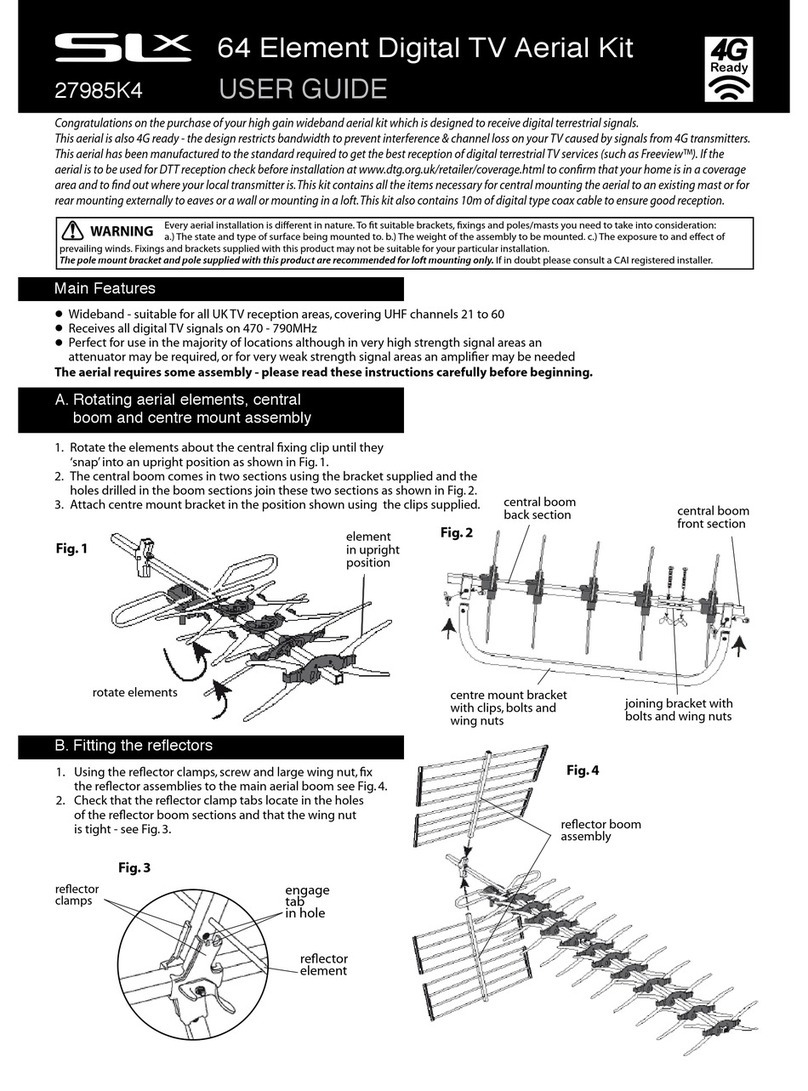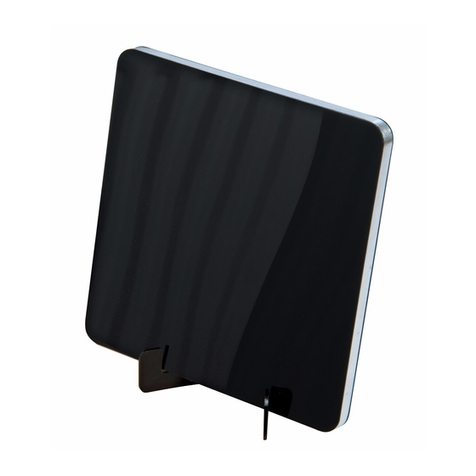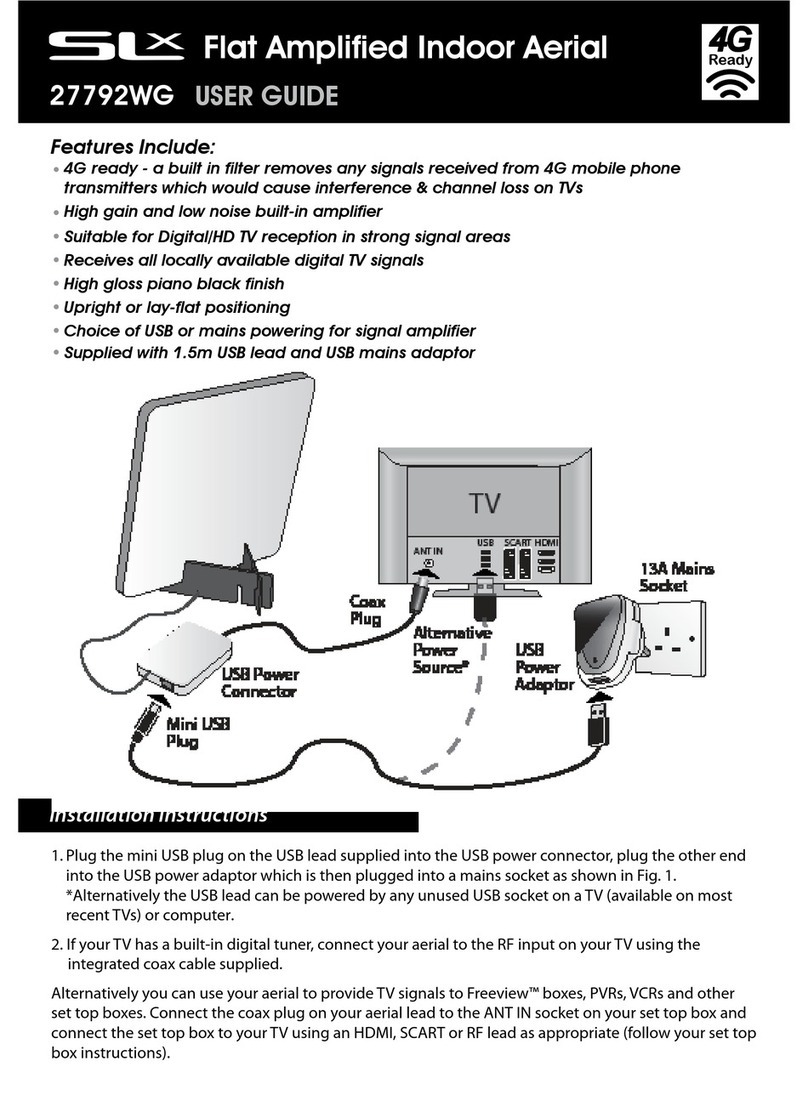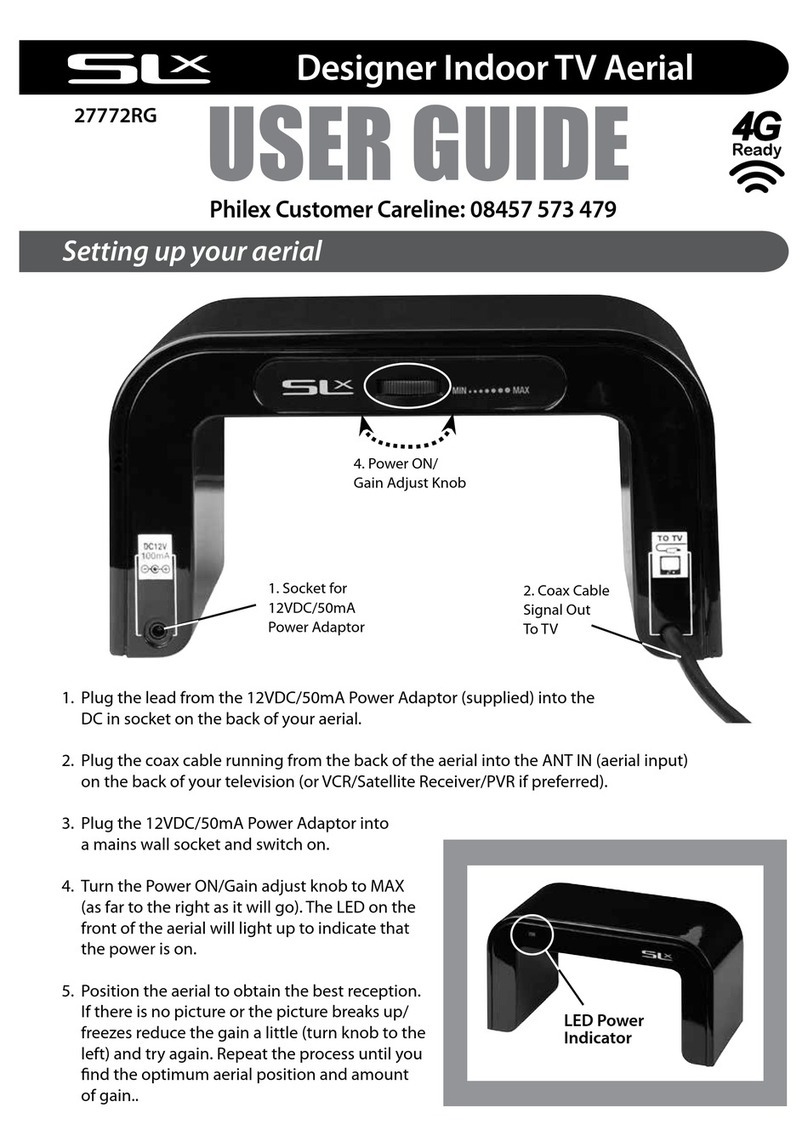
Specifications
Troubleshooting
Problems with DTT (Digital Terrestrial Television)
It is not possible to view digital channels under weak signal strength conditions. Therefore, typically
you will either receive digital channels with a clear picture and sound or you will not receive any
channels at all. Sometimes, an insucient digital signal can cause occasional blocking, freezing or
complete loss of picture. Try the following to improve the picture:
1. Reposition the aerial on dierent facing surfaces and at dierent heights.
2. Position the aerial at greater or lesser distance from TV until optimum signal is received.
3. Check the USB/mains connection.
• To prevent re or shock hazard, do not expose
this device to rain or moisture.
• This product is for indoor use only
• Do not expose the product to extreme heat
• Do not use the product close to water.
• Do not open this aerial it contains no user
serviceable parts. Refer servicing to qualied
personnel only.
• Do not overload wall outlets and extension
cords as this can result in the risk of re or
electrical shock.
General Safety Precautions
Frequency Range: 470-790MHz
Power Supply: 5V DC 100mA
Impedance: 75Ω
Gain: 16dB
© Philex Electronic Ltd. 2013 v1 MK42 0NX
Waste electrical and electronic products
should not be disposed of with
household waste. Please recycle where
facilities exist. Check with your Local
Authority for recycling advice.
For further information or any queries please contact
Customer careline: 08457 573479
Local Rate - UK Only
Technical Support: www.philex.com/support
Aerial positioning and tuning
To nd out what DTT channels should be
available locally go to: http://www.dtg.org.
uk/industry/coverage.html
and enter postcode. To view your local
transmitter’s distance and compass bearing
select “Trade view” from top bar.
You can attach the aerial to almost any at vertical surface using
the 2cm diameter adhesive pad supplied (peel o the backing on
one side the adhesive pad and stick it to the balun in the position
shown opposite). Before you attach the aerial to a surface try
positioning the aerial on dierent surfaces at dierent angles
to nd the position that gives the best signal, you may also
nd you get a better signal by mounting the aerial at
dierent heights. When you have found the best position for
your aerial peel the remaining backing o the adhesive pad and
stick the aerial to the surface chosen (make sure the surface is dry
and dust-free rst).
Adhesive
Pad


























